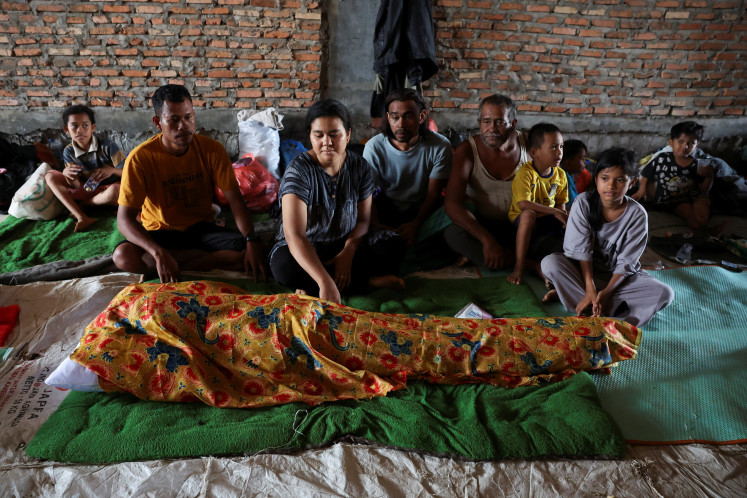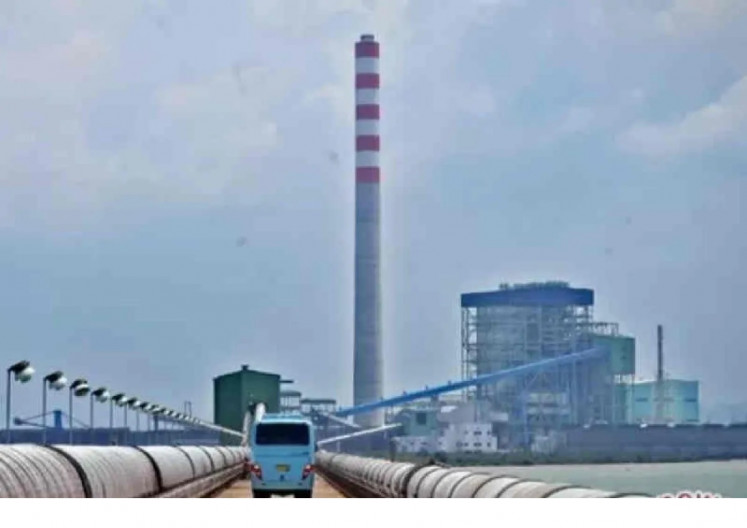Popular Reads
Top Results
Can't find what you're looking for?
View all search resultsPopular Reads
Top Results
Can't find what you're looking for?
View all search results‘Occupy Wall Street’: Between New York and Jakarta
Their ranks include young people in their teens and 20s, and students
Change text size
Gift Premium Articles
to Anyone
T
heir ranks include young people in their teens and 20s, and students. They include young adults, workers, the unemployed and university professors.
And they include other groups that have become disaffected by a weak economy. They have received support from celebrities and generous praise from some highly respected politicians. And yes, of course, some of them are well-worn anarchists.
They have camped for two months in Zuccotti Park, lower Manhattan, which is located halfway between Wall Street and the former twin towers of the World Trade Center.
In the beginning, their number was around 200, but it has since swollen to 2,000. And now their movements have spread to other major cities across the world.
As a group they are leaderless. Any member can speak freely on the reasons behind their protests. The unemployed speak bitterly about losing their jobs. Students express their anger because their parents can no longer afford to pay tuition fees and student loans.
They see no future for themselves after graduating. There are also other groups that express their opposition to nuclear power, the privatization of water and political corruption.
But the messages contained within their protests are diverse and lack focus. They appear to be poorly organized. It is not clear what they stand for and what their agenda is, and they cannot articulate this as a group.
Yet, there is a conviction rippling through their ranks that however the global economy works, it does not work for them.
The fact that all protests are targeting the world’s financial centers indicates that the financial system is the cause of the protester’s misery.
This is especially true in the US, where the greed for profits through reckless bank lending has shaken the financial system, forcing the government to spend billions of dollars to bail out some of the biggest banks in the world. This has halted economic growth, reduced income and thrown millions of people out of work.
It is understandable that most of their anger is directed against the banking system. They feel that the way the financial system is working is unethical.
Banks have been bailed out by using the taxpayer’s money, but the banks have not done anything in return. They have not extended credit and mortgages.
The protesters say that they have no problems with capitalism. But they are so outraged that banks have been rigging the system, so that banks have enjoyed profits throughout the good times but then have received bailouts in the bad times.
They see that the banks have got away with privatizing profits and socializing risk, and to them this is just another form of bank robbery.
But behind these eruptions of protest, it is clear that the underlying causes of anger are “economic inequalities” that have been increasing throughout the capitalist world. In the US, income inequality among various income groups has worsened, causing increasing concerns over the polarization of American society.
Such is the depth of inequality in the US that according to the US Central Intelligence Agency’s ranking of countries by income inequality, the US is more unequal than either Tunisia or Egypt.
The richest 1 percent of Americans possesses more wealth than the other 99 percent. The 400 wealthiest Americans listed in Forbes magazine have more combined wealth than the combined wealth of 150 million Americans.
This has been made possible because during the era of president Bush between 2002-2007, 65 percent of economic gains went to the richest 1 percent of Americans. According to the US-based Institute of Policy Studies, in 2010, of the 100 highest paid CEOs in the US, 25 CEOs received more take-home pay than the corporate taxes paid by their companies.
The interesting question for policy makers here is how income inequality is related to economic growth? Could income inequality be the reason why, despite billions of dollars of fiscal stimulus and a loosening monetary policy by the Federal Reserve, the growth of the US economy remains anemic?
Robert H. Frank, an economist from Cornell University, probably provided part of the answer. In his new book, The Darwin Economy, he cites that his study shows that among 65 national economies, the more unequal ones experience slower growth on average.
He also found that some national economies grow more rapidly at times when incomes are more equal, and that growth slows down when incomes are skewed.
Economists used to think that economic growth should come first, and that income distribution should be the next policy objective. Many think that income inequality is the price that has to be paid for growth.
But recent findings and empirical evidence both suggest the need to review the way that policies are sequenced with regard to growth and the distribution of income.
Indonesia has been experiencing strong economic growth, but the inequality of income between various income groups is so entrenched. Daily scenes in Jakarta and in other big cities across Indonesia clearly demonstrate how stark the gap has become between the richest few and the poorest majority. Various policies have been implemented to narrow the gap in income distribution, but without meaningful results.
The forces that push income distribution to be unequal are still greater than the forces that attempt to soften inequality through government policies. This situation is not sustainable because at some point in time, if Frank’s argument is correct, then growth itself will be undermined.
The protesters also expressed their anger toward government and politicians for their failure to seriously attempt to resolve the economic crisis and unemployment problems.
They see their politicians as being obsessed with narrow political interests rather than the national interest. They feel that they have been cheated by their politicians after they voted for them in good faith.
In Rome, a protester exclaimed, “You see how beholden politicians are to corporate interests, no matter how hard you have worked to get them elected. There is a disconnect.”
This sounds very familiar to the people of Indonesia. There has been so much outrage against politicians and government officials in Indonesia.
Evidence emerging from the investigation being conducted by the Corruption Eradication Commission (KPK) reveals how widespread the collusion is between members of the House of Representatives, government officials and businessmen. For a long time, they have subverted the government budget for their personal and political gains.
In New York, protesters are outraged by a dysfunctional government in Washington that is more interested in political posturing in readiness for the 2012 election.
In Jakarta, people are furious at the dysfunctional Cabinet of President Susilo Bambang Yudhoyono, which has delivered little. The government and the House will be more dysfunctional in the coming months as they start preparing for the general election in 2014.
People feel they are being abandoned. The only thing is, the Occupy Wall Street movement has not yet spread to Jakarta, for now.
The writer is an economist.










